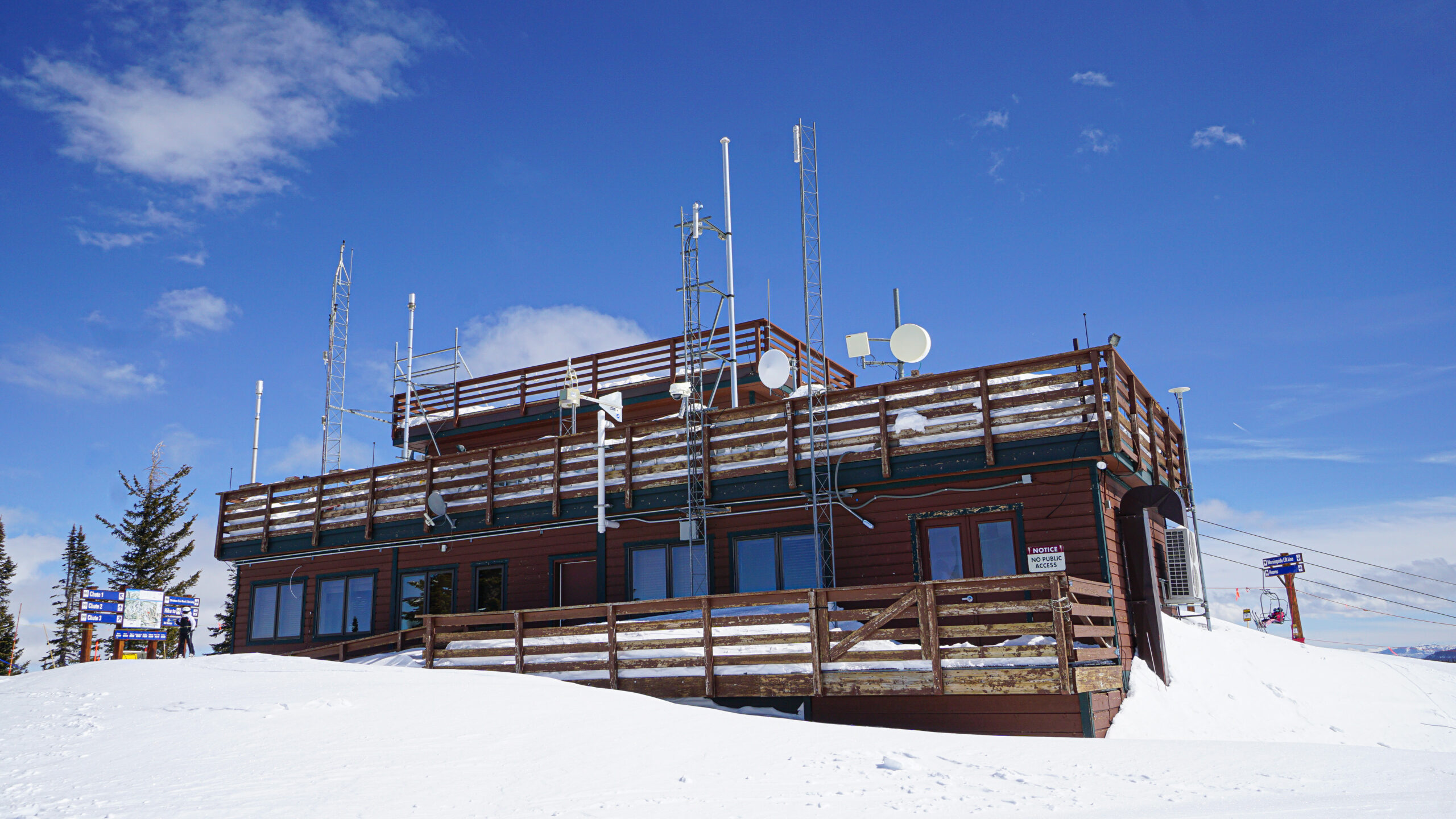Storm Peak Laboratory

Gannet Hallar in the lab.
There are only a handful of high elevation weather labs in the world, and one of them sits at the top of the Steamboat Ski Area.
Maybe you’ve noticed that building just at the top of the Morning Side Chairlift at the Steamboat Ski Resort with all the crazy antennae and satellite dishes on the roof, and wondered what goes on there. While some local organizations are lucky enough to get inside those doors for special tours, the facility is not open to the public.
The Storm Peak Laboratory is an atmospheric science and snow hydrology research center run by the University of Utah, whose mission is to advance discovery and understanding within these scientific fields. In other words, just as you are out there enjoying the fresh air and pristine wilderness that surrounds the ski area, you’ve got some of the best scientists in the world just a few feet away doing their best to protect it.
Storm Peak Laboratory was constructed during the summer of 1995 in the Rocky Mountains of northwestern Colorado (3220 m M.S.L.; 40.455 deg N, -106.744 deg W). The new facility is the latest stage of an evolutionary process of providing a practical, easily accessible facility for researchers, teachers and students of all ages and abilities.

Snow study plot @ 10,000 ft.
We caught up with Dr. Gannet Hallar, Professor at the University of Utah in the Department of Atmospheric Science, who is the director of Storm Peak Laboratory. Under her leadership, the lab has undergone major changes including new instrumentation, new field courses and a significant building expansion. She host many undergraduate and graduate level field courses at the laboratory from a variety of institutions, including the University of Utah, University of Colorado, Texas A&M, etc.
Tell us about this facility and what makes it special.
We are located at the top of the Steamboat Ski Resort next to the Morning Side chairlift in the Routt National Forest. The lab maintains a special use permit through Forest Service for the land surrounding the facility. We are a unique high mountain in-cloud facility, one of only a few in the country

Storm Peak Lab with a coating of rime.
What kind of research is conducted there?
We do atmospheric science research. We study the impact that gasses and aerosols in the atmosphere have on climate and human health. We also study clouds and what types of particles make clouds, as well as water and ice content in clouds.
What is the commute like and how do you get all the gear up there?
On most days we take the chairlift. We have a Pisten Bully snowcat and use snowmobiles to transport equipment. Some of our researchers use snowshoes to walk to and from the chairlift because they don’t ski.

Mountain meteorology class.
Who is studying there?
Atmospheric scientists who study particles, clouds, and gasses, and we also host snow hydrologists. We have people come from all around the country. We have some permanent staff, but we always have different groups visiting. Right now, we have a group from Massachusetts Institute of Technology (MIT) and a group from the National Center for Atmospheric Research in Boulder. We also conduct a lot of field classes for students from universities all over the country. We have a 9-person bunk house, full kitchen, classroom and meeting room. The facility is 2,500 square feet.
What’s the data used for?
We do long term monitoring of several things to investigate atmospheric trends. We are part of an international global atmospheric watch program that collects long term data on particles in the atmosphere and measures trace gasses and how they change over time. Similar to all other sites, we are seeing a significant increase in greenhouse gasses, especially CO2. We are also seeing changes to an increasing number of wildlife. We keep a long-term data record that goes into national database and publish papers on what we find about what is changing in our atmosphere.

The deck at Storm Peak.
Are you publicly or privately funded?
We are primarily federally funded and receive most of our funding from the National Science Foundation. It’s always a challenge to stay sustainable and the government shutdown really affected us. If you’re interested in supporting the lab, we always appreciate donations, which can be given through our website.
What is your mission?
A lot of technology development happens here. For example, our group from MIT is developing new technology to measure clouds which has the potential to address climate change and improve the de-icing of airplanes. We also do a lot of graduate and undergraduate training up here. One thing we are very proud of is how many students are trained in this facility, approximately 100 every year.
Originally published @steamboatsir.com, photos by Maria Garcia, Ian McCubbin, and Gannet Hallar.










